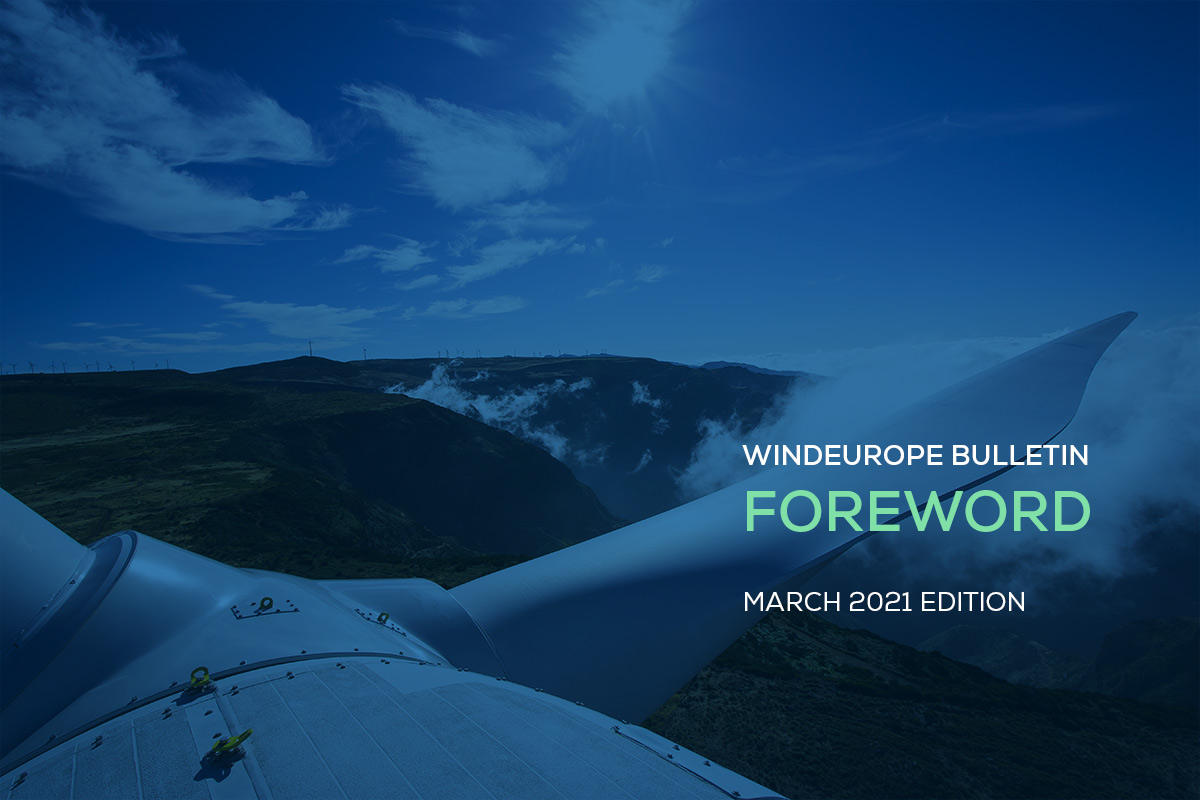3 March 2021
WindEurope Bulletin CEO Foreword on release of 2020 Statistics

Dear WindEurope Member,
Our report on wind energy statistics in 2020 is now online. The data confirms that wind withstood the worst of COVID-19. While there were delays to installations in the first half of the year, we bounced back in the second half as other energy sources saw a sharp fall in their output. All told, we supplied up to 16% of electricity across Europe, and installed 14.7 GW worth of capacity – 10.4 in the EU-27. Broken down, 80% of this installed capacity was onshore, although offshore should grow to around a third over the next five years.
Despite these successes, we fell short of several targets we had set for 2020. We expected to install around 21 GW during the year. And with the newly revised 2030 climate targets, we’re quite far off where we need to be as an industry if we are to help reach this goal. We would need 18.4 GW just to reach the EU’s existing renewables target – under the EU’s new commitments, up to 25 GW. And now EU industry fully supports this – the Head of the Chemicals Industry Associations supported our release by saying Chemicals want more wind, but that implementation is lagging. This is significant – Heavy Industry used to worry about the costs of wind and its impact on energy systems. Now they want wind. But not all of the trouble has been down to COVID-19. And finance and technology are not the issue.
One final point about these statistics – a sizeable amount of wind energy in Europe is aging and reaching the end of its expected service-life. Decommissioning is still a pressing issue for us. 388 MW were fully decommissioned across Europe during 2020, while 345 MW were repowered – a net loss of 40 MW. If we want to safeguard more of our existing capacity, we need to better address the end-of-life question and encourage repowering wherever we can going forward.
On the back of this report, be sure to join us for our free webinar on 4 March! Like our edition in February, we’ll be taking a closer look at the report’s findings – the individual stats for different Member States, the broad trends, and importantly, the outlook for our industry over the next five years. Click here to register.
We’ve been keeping a close eye on the progress of the Recovery and Resilience Plans (RRPs) as well. As Europe recovers from COVID-19, €673bn has been set aside to support the Resilience and Recovery Facility. Member States have until 30 April to submit their individual plans. As an industry, we need to engage National Governments to ensure support for the right projects. 37% of overall funding will go to renewables, but we can ensure wind benefits through grants and loans supporting R&D, grid infrastructure, EV charging stations, ports, roads, and offshore scale-up, among others – see our infographic for more info.
In terms of events – and following on from the point raised above – our End-of-Life Issues and Strategies Seminar (EoLIS) will take place on 4-5 November in Brussels. We’ll be bringing together industry leaders and innovators to look at different approaches to wind turbine end-of-life, and outstanding concerns to be addressed. We’ll shortly be launching a survey to give you a say in preparation for this year’s edition – more details on this below.
I wish you an enjoyable read.

Giles Dickson
Want to read more and receive our regular newsletters?

